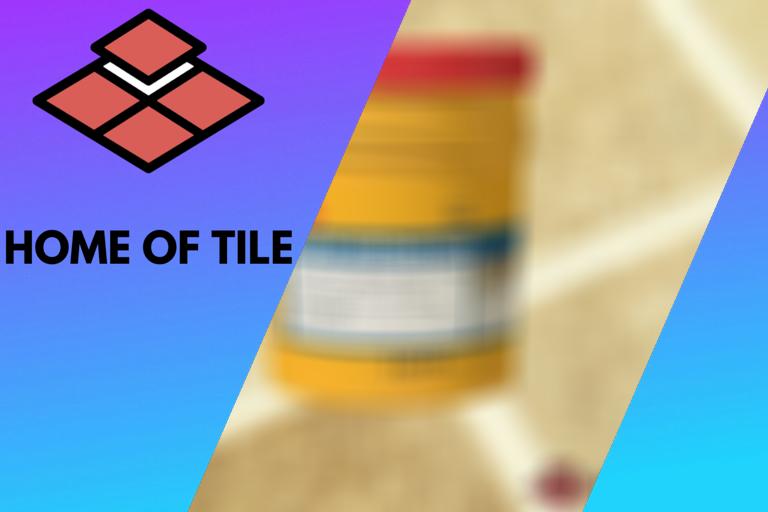When To Use Sanded Grout? What professionals say
The difference between sanded and unsanded grout is not only aesthetic–they each have their own strengths and weaknesses. And just because sanded grout is cheaper doesn’t mean you should use it with every tile type. So, when should we use sanded grout then?
Sanded grout is used for grout lines that are ⅛ inches (3.18 mm) thick or more. Additionally, sanded grout is best for horizontal application between tiles that are not made from easily scratched material, such as stone. If you prefer your grout to be rough to the touch, you should use sanded grout.

In the rest of the article, I’ll discuss four instances when it’s best to use sanded grout. Moreover, I’ll discuss if sanded grout needs to be sealed to protect it over time.
When Should Sanded Grout Be Used
The type of grout you should use depends on many different things. But, you can’t choose sanded or unsanded grout for every situation when placing your tiles. There are some instances where sanded grout is a much better option than unsanded grout and the other way around.
Before listing some of the situations when to use sanded grout, it’s important to know why it’s sometimes better to use sanded grout. Tile grout is made using two basic components: water and cement. This mixture is called unsanded grout. On the other hand, when you add sand to the mix, you get sanded grout.
Sand is added as it makes sanded grout more suitable for some situations but not for every situation. That’s why we still have the option of sanded and unsanded grout.
So, when should we use sanded grout? Let’s take a closer look at the four instances when sanded grout should be used.
● Use Sanded Grout for Grout Lines That Are ⅛ Inches (3.18 mm) and Up
If you’re planning on making your grout lines between the tiles really thick and visible, the best option is to use sanded grout then.
Unsanded grout is made from cement mixed with water, and cement shrinks when water evaporates in the drying process. When grout lines are small, there’s no larger issue with unsanded grout cracking because the area of the grout is really small, and the cement is compactly filled into the space between the tiles.
However, when you have really wide grout lines, the cracks are not only visible to the naked eye, but water can enter through the cracks. As a more stable alternative, sanded grout is perfect for thicker grout lines from ⅛ inches (3.18 mm) and more. That’s because sanded grout doesn’t crack. The sand keeps the cement compact and protected from water.
● Sanded Grout Is Used for Horizontal Application
It really depends if you’re going to use sanded or unsanded grout on the floor or wall tiles. And that’s because of the gravity.
Sanded grout is perfect for the horizontal application, that is, the floor tiles. Firstly, gravity can’t affect floor tiles that much since they’re already glued to the ground. Wall tiles don’t have that kind of luxury, unfortunately. So, unsanded grout is a better option for vertical application since it glues the tiles more firmly to the wall and to one another.
In addition, sanded grout is more durable and can take a lot of damage. Therefore, it’s better to use sanded grout for your floor tiles. Not only because people are constantly walking over the floor tiles but also because (due to gravity) things tend to fall to the floor, especially in the kitchen.
● Use Sanded Grout for More Durable Tiles
Sand is a coarse material that can cause a lot of scratch marks all over your beautiful tiles. When you’re applying any grout, you have to fill empty spaces between the tiles by smearing the grout mixture over the tiles. If you’re using sanded grout, that can really damage the tiles because of the friction of sand particles being rubbed against tiles.
If you have tiles that are made from stone, for instance, then you don’t have to worry about scratching your tiles with sanded grout. But there are some materials like marble or limestone that are not that hard. That means, unfortunately, that the sand from sanded grout can ruin your new tiles before the grout is even dry.
This is one of the reasons why sanded grout is cheaper than unsanded grout. So, if you think you’ll save some money by applying sanded grout over your beautiful marble tiles, you can do more harm than good.
The best option is to buy more durable floor tiles and use sanded grout. That way, your tiles will stay undamaged, plus when you drop something heavy on the floor, the tiles and grout won’t get damaged easily.
● If You Like Rough Grout Use Sanded Grout
Because of the sand in the grout mixture, sanded grout makes it rough. If you prefer really smooth grout, then you should use unsanded grout.
You’ll feel sand particles even when your grout is dried. So, from the aesthetic point of view, if you like to feel or see the rough and uneven surface of the grout, then sanded grout is a perfect option.
Does Sanded Grout Need To Be Sealed
There’s always the question of grout sealers and if they should be used at all. On top of that, many people are not sure if they need to seal sanded grout in particular since it’s more durable than unsanded grout.
Sanded grout needs to be sealed. Once sanded (or unsanded) grout is dry, grout sealer should be applied according to the instructions on the packaging. Even though sanded grout is more durable, sealing it will ensure it lasts longer and that it doesn’t get dirty.
Additionally, you should seal the grout the first time when the grout is dry. But it doesn’t stop there. Sealers lose their sealing power after some time. So, the best option is to seal your grout once every year. It is a tedious process, but it will ensure that the grout lasts longer without any dirt or cracks.
Conclusion
Using only unsanded or sanded grout can be a bad idea. In some situations, you’ll need to use sanded grout, and in some, you’ll use unsanded grout. So, it’s really important to know when to use sanded grout.
You should use sanded grout in three instances:
- For grout lines from ⅛ inches (3.18 mm) and up.
- For floor tiles rather than wall tiles.
- For tiles made from more durable material.








